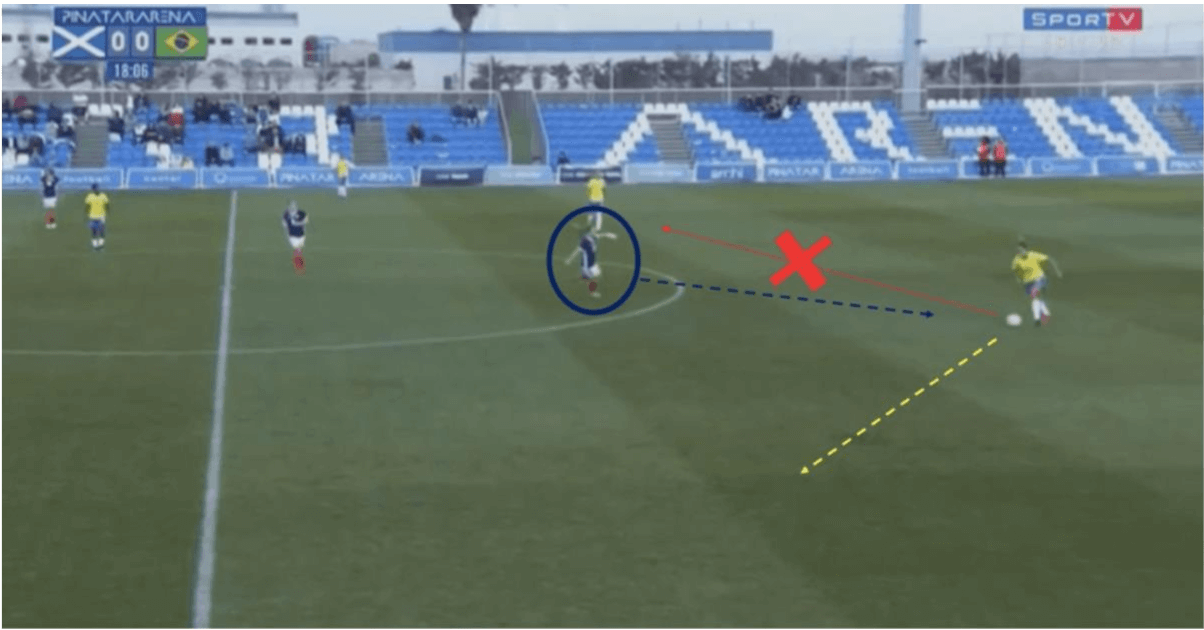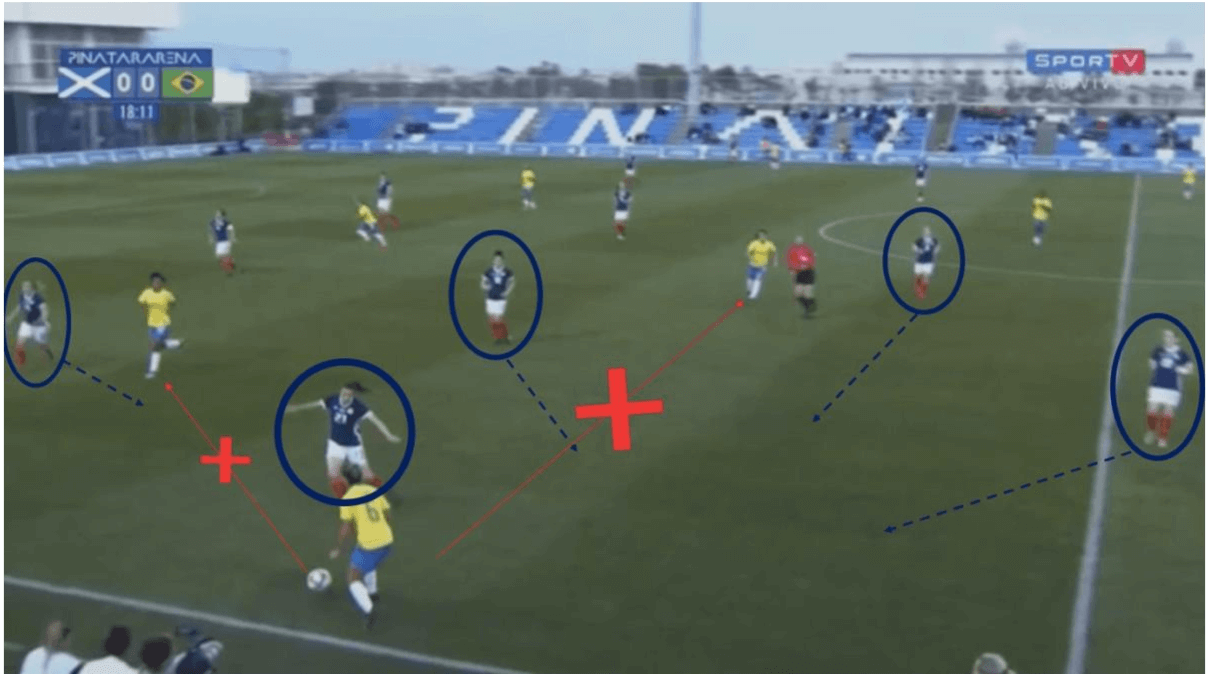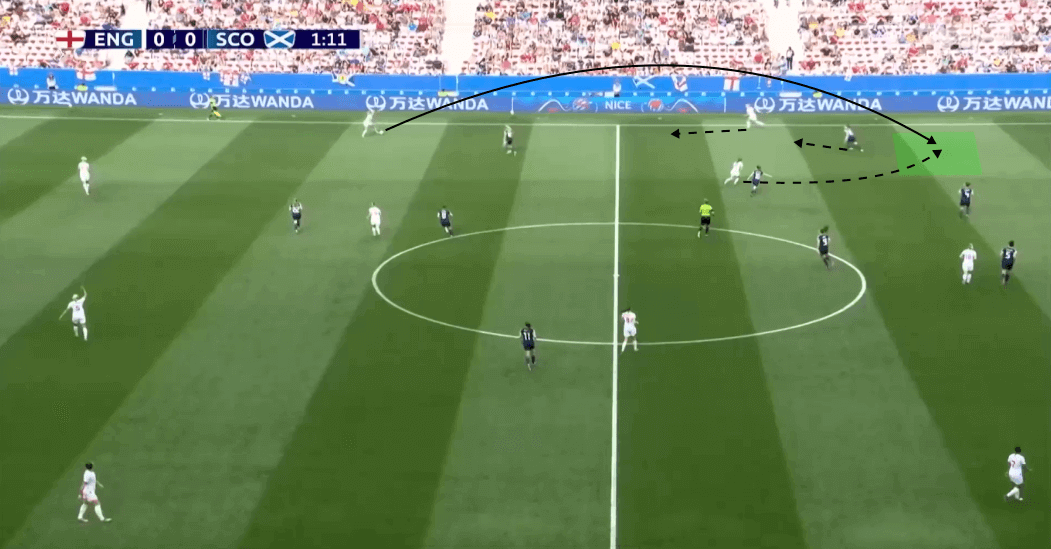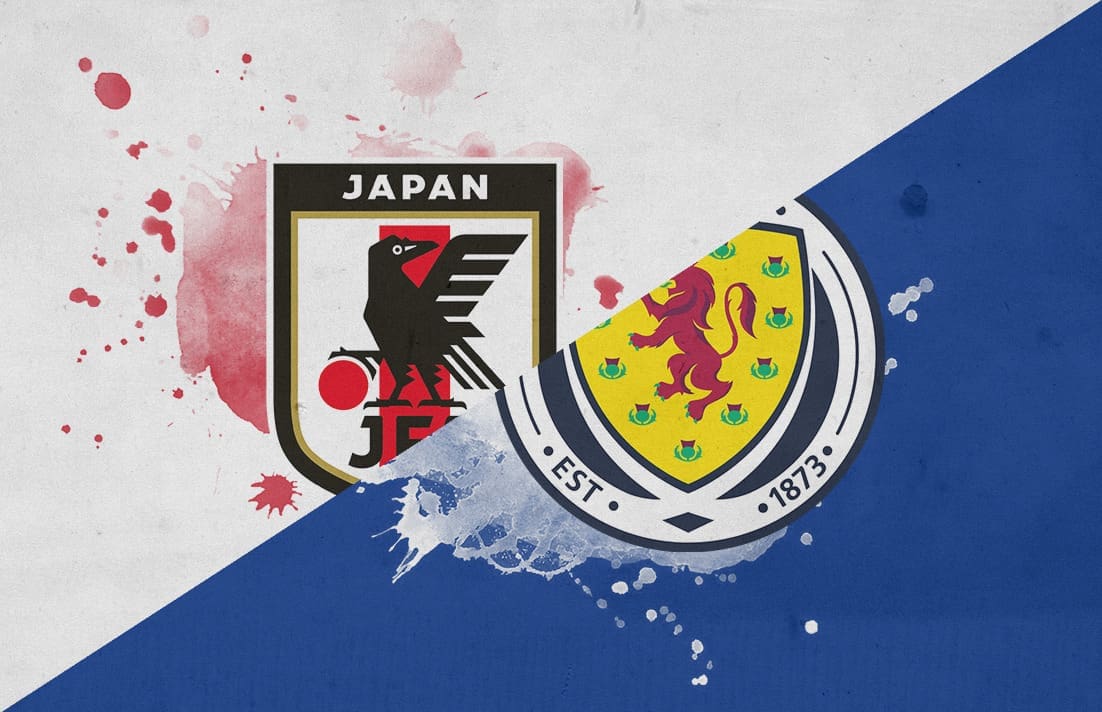Against Argentina, Japan’s attacking style had an uncharacteristic staleness about it. While the Albicelestes did well to thwart the Nadeshiko in their last game in the FIFA Women’s World Cup, Japan’s lack of quality, movement, and numbers in the final third was clear. Meanwhile, Scotland put on a brave performance which saw them lose narrowly to their rivals, England. Although the Scots are sat at the bottom of group D, they may have been encouraged after Japan’s disappointing performance against Argentina. While Argentina’s defensive tactics share similarities with Scotland’s, Japan must alter their attacking strategies if they want to avoid a shock elimination at the group stages. This tactical analysis preview will explain why Japan must change their attacking plan against the Scots to avoid another disappointing performance and hope to qualify for the next round of the tournament.
Scotland and Argentina’s similar defensive strategies
While not renowned for pressing as intensely as Argentina, Scotland’s defensive strategy still draws parallels to that of the South American’s. Scotland often seek to cut off the opposition’s central passing lanes which pushes them to pass out wide. Once out wide, the Scottish players create overloads in the wider areas to force the opposition against the touchline and cause turnovers.


This was a similar tactic to what Argentina deployed in curbing Japan’s attacking freedom. The South Americans conceded space to Japan up until the half-way line. As soon as Japan attempted to build centrally past that point, Argentina’s midfield line forced them wide and overloaded the wide areas. This resulted in much of Japan’s build-up stifled with throw-ins and turnovers.
While Scotland will not commit as many bodies back as Argentina did, it is important that Japan alter their attacking strategy so they do not fall prey to similar tactics against Scotland.
Tactical Analysis – What should Japan do differently?
Using tactical analysis, Japan could alter their 4-4-2 to a 4-3-3 in attack and 4-2-3-1 in defence, with the introduction of Mana Iwabuchi for Yuika Sugasawa. Against Argentina, Sugasawa’s lack of movement in the final third was a catalyst for Japan’s stagnant attack. Iwabuchi’s game is built on her excellent mobility on and off the ball, particularly in tight and crowded spaces.
By dropping between Scotland’s midfield and defensive lines, Iwabuchi would be ideal to drag their players out of position, as England’s wide players did with Scotland’s full-backs. Whether she occupies space out wide or decides to work her way more centrally, Iwabuchi can most certainly use her sharpness and technical quality to make Japan a much more dangerous attacking outlet.
Also, with an added player in midfield from the 4-4-2, Iwabuchi would bear the responsibility of providing much of the attacking ingenuity, such as third man runs, one-twos or even going 1 v 1. The combination of Iwabuchi, Hasegawa, and Yokoyama in the final third could be particularly exciting should Takakura opt to field this formation.

In a 4-3-3 formation, Takakura would see her full backs be more productive in the build-up, due to added options in linking up the play. A common feature of this Japanese side is the full backs dominating the wide areas with wingers which cut inside and play in the half spaces, linking with their attackers and midfielders. Using this formation, Takakura would be able to see this fruitful pattern of build-up succeed against Scotland.
In addition, this would allow the likes of Sameshima to be in a better position to bring the ball up to the middle and final third of the pitch, as she possesses a central midfielder, left winger and the floating attacking midfielder all as passing options. This would encourage an integral outlet in the Japanese attack to ensure the Nadeshiko are not overloaded in key areas.
However, Takakura will undoubtedly be wary of Scotland’s exploitation of England’s attack-minded full-backs in the last game. So, in the interest of maintaining defensive cover on the counter, the national team coach must instruct Sameshima and Shimizu to attack responsibly whilst providing necessary defensive focus.

Against Scotland, a 4-3-3 would be the answer to restoring the dynamism in Japan’s attacking play. This formation would allow a passing triangle of Sameshima, Miura, and Hasegawa with Iwabuchi floating. If these players consistently provide the ball-carrier with short and quick passing options, this adjustment would be an improvement on Japan’s flat 4-4-2 shape.
The image below was taken from England’s recent game against the Scots. The Lionesses worked a decent opportunity down the left-hand side with their dynamic movement and combination play. England’s left midfielder, Beth Mead, dropped deep and dragged Scottish right-back, Sophie Howard out of position. The Lionesses’ left-back, Alex Greenwood clipped a ball over the top to Fran Kirby, who exploited the space in behind with a line-breaking run.

By going with a 4-3-3, the Nadeshiko could mirror the exploits of Greenwood, Mead, and Kirby with Sameshima, Hasegawa and Iwabuchi down their left-hand side. However, as Scotland are expected to overload the wide areas, it is imperative that Japan use their technical prowess and are quick with their combinations and movement. Otherwise, Takakura’s side will be as toothless as they were in their last game.
Conclusion
As the first round of games have flown by, it was interesting to gauge where each team in the competition could finish. But arguably no team played more disappointingly in their opening game – with regards to their quality – than Japan.
It is for this reason that the Nadeshiko will be eager to redress their languid showing with a strong performance against Scotland. However, in order to accomplish this, Takakura must tweak her side’s attacking strategy so they do not fall victim to the same pitfalls.
On paper, Scotland may not fancy their chances as they sit bottom of group D. But on the pitch, the Scots are probably galvanised off the back of their valiant performance against the Lionesses and Japan’s poor showing. Only time will tell if Japan’s performance was a one-off or if they are at real risk of exiting the competition at such an early stage.
If you are following the FIFA Women’s World Cup 2019 then you will find our FREE tactical preview magazine the perfect compliment to the tournament. You can download it HERE – each nation is previewed and we also profile their key player and young player to watch. Enjoy!






Comments